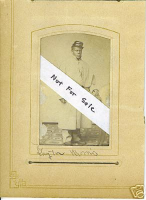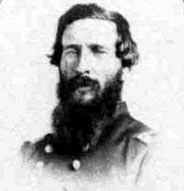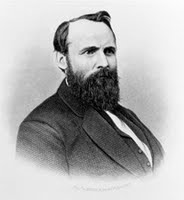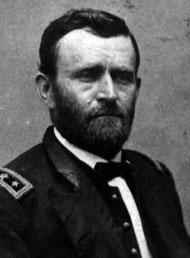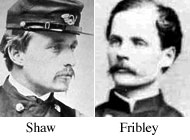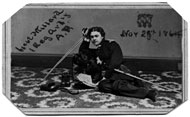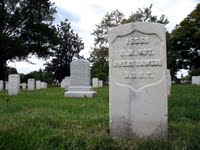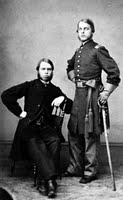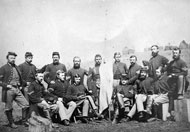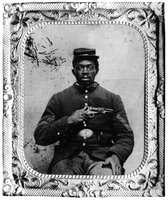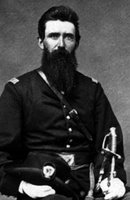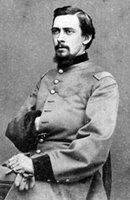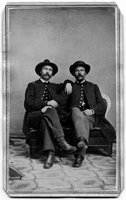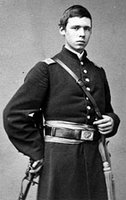Colored Troops in Non-Combat Roles: A Question of Military Necessity?
A letter in the National Archives offers another reason for using colored regiments in support roles, and offers an explanation why.
On Oct. 9, 1864, Brig. Gen. James Lowry Donaldson, the Chief Quartermaster of the Military Department of the Cumberland, sat down in his Nashville, Tenn., office and penned a reply to a letter he had received a day earlier from Col. Reuben D. Mussey, a strong advocate of enlisting black troops and using them on the front lines. Mussey at the time was actively engaged in recruiting and organizing men from Tennessee and Georgia for colored regiments. His role often put him at odds with the top general in the region, William T. Sherman, who did not support the U.S. government's position on raising African American forces.
Col. Mussey fired off a letter of protest to Donaldson after he learned that colored troops were diverted to assist the quartermaster's department. Donaldson's four-page reply:
Colonel,I find this letter of interest not only for its explanation, but for what it suggests about the officers involved: Donaldson must have been aware of the conflict between Mussey's advocacy of and Sherman's negative position on black troops, and had to have known that Sherman would readily agree to his request. Mussey's obvious concern that Donaldson's request would fuel Sherman's desire to keep African Americans off the front lines of his army are well founded. Donaldson takes the high road in declaring his support for colored troops in the field, then falls back on the tired excuse that the black soldiers "had more work in them" than others, and describes how cheerfully they fulfilled their labors. Donaldson goes on to praise the two regiments in the highest terms, but then qualifies his comments with the caveat that they are only as good as the opportunities available to them (not including a combat role).
Your communication of the 8th inst. relative to the two Regiments of U.S.C.I. [U.S. Colored Infantries] now reporting to the Chief Quartermaster of the Dept., and requesting a statement of the duties they are assigned to and how they have discharged it has been received.
In reply I have the honor to state as follows: Last Winter and Spring when the whole resources of the North West [of the Department of the Cumberland] were being poured in upon this Depot, by both rail and river, in order to accumulate, if possible, a six months supply for Genl. Sherman's Army, in anticipation of the Summer Campaign [which ended in the capture of Atlanta], the Q.M. Dept. found itself at its wits-ends to receive and handle the vast amount of all kinds of stores that soon thronged our lines and streets. We made extra exertions to secure stevedores and laborers from the North, and speedily ran up our force of employees from six or eight thousand (6,000 or 8,000) to twelve and fifteen thousand (12,000 & 15,000) but with all our efforts we were still short of men and, as a derrier resort [last resort], I called on the Major Genl. Comdg. for one or two Colored Regts to report to me for such fatigue and guard duty as I might find necessary.
I did not want to do this, for I believe in Colored Troops and think they should take the Field and fight the same as White ones, but I know there were Colored Regts in the Dept. not yet fit for the Field and that, for obvious reasons, they had more work in them than I could get out of any other troops.
General [George H.] Thomas approved of my Requisition, and late in March sent me the 15th Regt. U.S.C. Inft., Col. T.J. [Thomas J.] Downey Comdg., and soon after, in April, the 17th Regt. U.S.C.I., Col. W.R. [William R.] Shafter Comdg., these two Regts. at that time did not number over 1,500 effective men, but they at once proved to be a great assistance to me.
They furnished me details for Fatigue purposes exceedingly large for such an effective strength, and no men ever worked better or more cheerfully. Their Officers all readily saw the necessity of hearty cooperation in order to be prepared here to sustain Genl. Sherman when he moved, and that the Colonels Comdg. especially deserve my warmest thanks.
Subsequently, when supplies were well here for the Summer and Nashville had been denuded of troops in order to concentrate every thing at the Front, I relieved these Regts from all Fatigue duty, and since then have used them only for guard purposes.
At present the 15th Regt. is stationed on the line of the Edgefield and Kentucky R.R., guarding it from Nashville for a distance of some 40 miles, with Hd. Qrs. at Springfield Tenn. At Springfield they have thrown up quite respectable and serviceable fortifications, and at various other points they are now engaged in the construction of Block Houses.
The 17th Regt. has its Hd. Qrs. here at Nashville, several of its Companies are doing duty as guards to Public Store Houses &c here, and the balance I have sent to various points, up and down the Cumberland [River] from 10 to 20 miles from Nashville, to protect Govt. Wood Choppers and guard Govt. wood piles. At times I have found it necessary to detail some of them, temporarily, as guards for Govt. Steamers, to protect them from Guerrillas on the river, and they have always conducted themselves, so far, admirably.
The effective strength of both Regts. is thus fully consumed by our necessary operations here, and about here, and so far I have nothing but praise for both of them.
The Regts. are both well disciplined, and exceedingly soldierly in appearance and conduct, and no better troops could be desired any where, considering their opportunities.
The prejudice they awakened at first among some here has disappeared, if not died out, and I ask no better guards or garrisons for any purposes of the Q.M. Dept. then those furnished me.
I have only to add further, that they have discharged well all the duties to which I have found it necessary to assign them, and that, so far as my observation extends, here the Organization of "Citizens of African Descent" into U.S. Troops has, in this Military Department at least, proved an eminent and entire success. God grant that the problem of Human Slavery on this Continent may thus, at last, receive its solution, and the race so long down-trodden and oppressed be thus permitted to repay "the proud man's contumely and the oppressors wrong," by fighting to the death their rebellious masters beneath the flag of Freedom and the Union.
I suspect Mussey was not at all assuaged by this reply. Leading the charge for racial equality, Donaldson's conservative attitude as implied in his explanations likely infuriated and frustrated Mussey further. However, his protest letter did produce a thoughtful, careful response from Donaldson.
Notes: Donaldson's quote "the proud man's contumely and the oppressors wrong," appears on page 393 of The Works of Vicesimus Knox, D.D., Vol. II (London: B. Bensley, 1824). Donaldson's letter is contained in Letters Received, Colored Troops Division, entry 360, file M-750-(CT)-1864, Records of the Adjutant General's Office, 1780s-1917, Record Group 94, at the National Archives in Washington, D.C.
Labels: civil war, department of the cumberland, history, james lowry donalson, military, reuben d. mussey, u.s. colored troops, union, usct, william t. sherman
